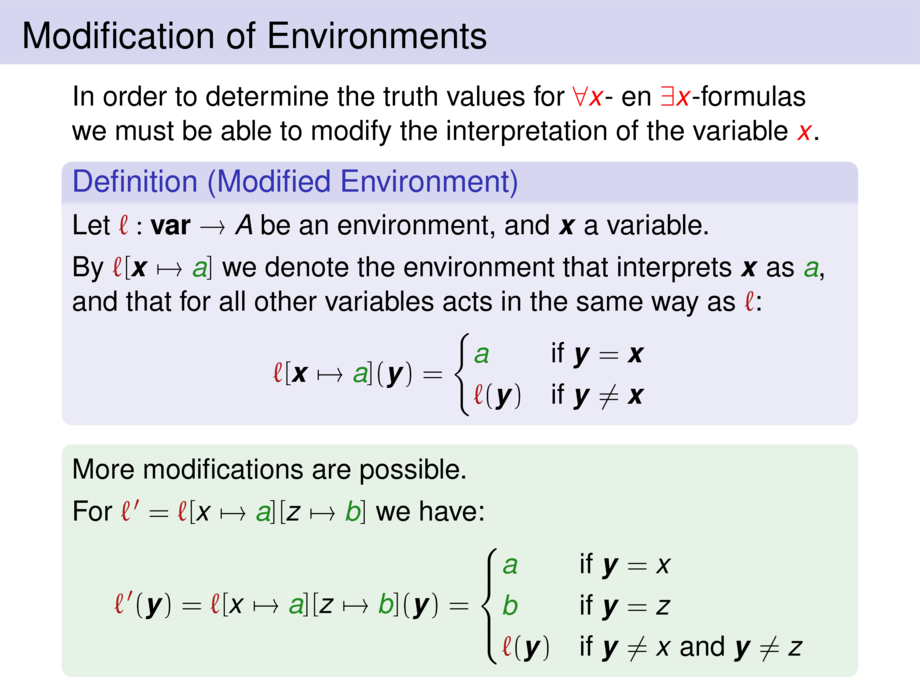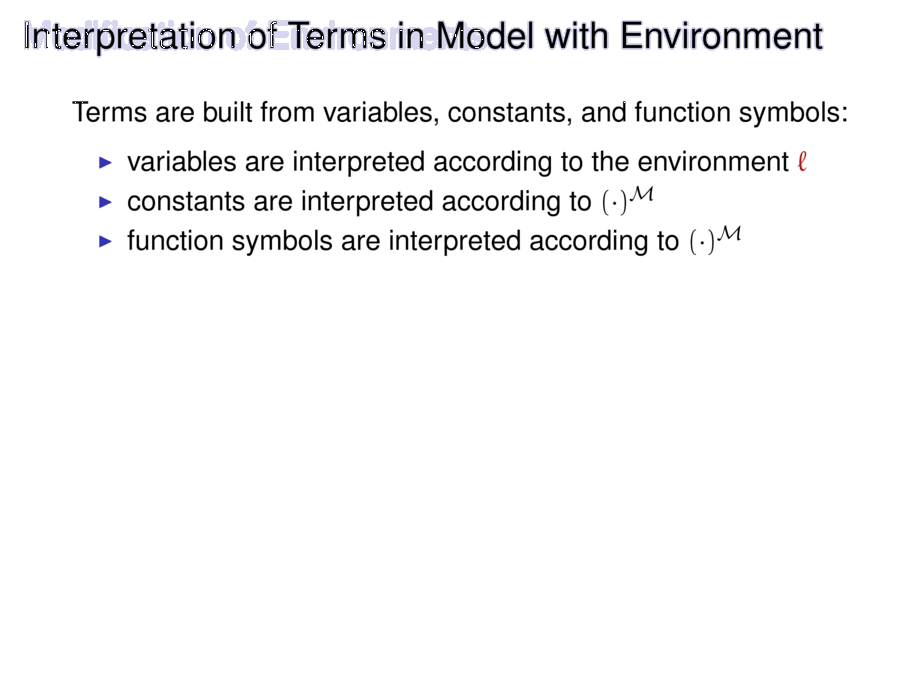



































































































196/270
\begin{frame}{Interpretation of Terms in Model with Environment}
Terms are built from variables, constants, and function symbols:\\
\begin{itemize}
\item variables are interpreted according to the environment $\saluf$
\item constants are interpreted according to $(\cdot)^{\model{\amodel}}$
\item function symbols are interpreted according to $(\cdot)^{\model{\amodel}}$
\end{itemize}
\pause\bigskip
Let $\model{\amodel}$ be a model and $\saluf$ an environment.
\begin{block}{Interpretation of terms}
The interpretation $\intin{\formula{t}}{\model{\amodel},\saluf}$
of a term $\formula{\ater}$ is defined as:
%
\begin{align*}
\intin{\formula{\ater}}{\model{\amodel},\saluf} =
\begin{cases}
\aluf{\formula{\avarsynvar}}
& \text{if $\formula{\ater} = \formula{\avarsynvar}$ for a variable $\formula{\avarsynvar}$}
\\
\intin{\aconstsynvar}{\model{\amodel}}
& \text{if $\formula{\ater} = \aconstsynvar$ for a constant $\aconstsynvar$}
\\
\fap{\intin{\safuncsynvar}{\model{\amodel}}}
{\intin{\formula{\ateri{1}}}{\model{\amodel},\saluf},
\ldots,
\intin{\formula{\ateri{n}}}{\model{\amodel},\saluf}}
& \text{if $\formula{\ater} = \formula{\afuncsynvar{\ateri{1},\ldots,\ateri{n}}}$}
\end{cases}%
\end{align*}
by induction on the term structure.
\end{block}
\end{frame}

